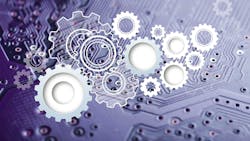What's the Difference Between the I2C and the I3C Bus? (Download)
The I2C and I3C interconnect technologies are close cousins, both conceived as interfaces for short-haul (intra-board) communication between integrated circuits and other digital devices. As we shall see, I3C is an "improved" version of I2C, which shares a lot of common technology and characteristics that were the result of I2C's somewhat turbulent development history.
The Inter-Integrated Circuit (often referred to as I2C, I2C, or IIC) bus's origins date back to the late 1970s and early 1980s during the rapid rise of what would eventually be referred to as "embedded systems."1 Thanks to the increasing complexity and speed of microcontrollers (MCUs) and their associated peripherals, these low-cost single-board computing elements integrated processing, sensing, and control functions that became the basic building blocks for everything from automotive and medical equipment to consumer electronics.
